Last night I read every piece of available information in the press kit I was handed on my way out of the Das Wesentliche event, on the Leica website and in dealer releases to get a better handle on the new products before seeing them today at the show. I figured I had a pretty thorough understanding of the new products from a technical perspective, but you never really know a camera until you get your hands on it. How will it feel? Will it perform up to expectations? Well, I got most of those answers today at the Leica booth.
Truth be told, last night was a very late one, with me seeing the sunrise out my window before I could even think of getting into bed for a few hours. So, getting to the show late, I reasoned that it only made sense to look at one product and really understand it, instead of flitting from product to product or booth to booth. I decided with all the interest, I’d focus on the new Leica M.
Coming in the South Entrance to the Koelnmesse, I headed straight to Hall 1 for the Leica stand. Hall 1 isn’t in the flow of traffic like Leica’s regular spot of the past in 2.1. In fact, you have to walk through Halls 3 and 2 to get to Hall 1 and there is no other hall connected. In other words, you wouldn’t end up there by accident – you’d have to mean to go see Leica, not just happen upon it meandering through exhibits. Did this keep visitors down? Not from what I saw. The Leica booth was hopping with activity, but avoided feeling crowded due to the sheer scale of it. Different demo tables were set up around the room with letter designations for the different systems.
I went right for the M table and was happy to see Wanja Szypura free to help me. He and I were talking last night at the event at some length about the new products. Wanja works with the digital imaging processing of the new M and S cameras in the R&D division under Dr. Volker Zimmer. He understands sensors, demosaicing, noise suppression, dynamic range, bit precision, and is the Leica point person working with Adobe. In other words, he’s my type of guy. I love to know what is going on under the hood, not just what the specs say.
He then introduced me to his colleague, Henning Rafflenbeul, who is the project manager responsible for the development of new M. I’ve said this before, but it bears repeating: coming up to a demo counter at Photokina, you never know who will be showing you the latest viewfinder accessory or lens cap. This person might just be the one who designed your favorite lens or developed the AF system in the X2.
So, we got right down to it.
I picked up the M. It felt great. Good heft. Nice leatherette. The thumb rest felt nice, maybe not as perfect as the Thumbs Up on my M9, but certainly better than a stock M9. The new d-pad, now in metal, had just the right amount of clickability. The added thumbwheel, also metal, felt smooth but still had good click stops. I started examining the new buttons. On the front of the camera is the focus peaking activation button, within perfect reach of your middle finger. It’s slightly concave and easy to find and press. I immediately felt comfortable with its placement. The top “M” button next to the shutter release was also easy to get to, and reminds me of the placement of the movie button on the D-Lux 5. When I asked if M stood for movie or motion, my Leica friends replied simply, “No. It’s just M for M, “ and smiled.
The M is available in black and silver finish. Personally, while I have tended to prefer silver M cameras when available, I think I’m leaning towards the black.
On the backside, the buttons have been rearranged from the M9. The top button on the left hand side of the 3” LCD is now Live View. The Play button has taken a second spot right below, but for good reason. Once you start playing with live view you’ll see why.
The Info button has been moved to the center of the d-pad and the Menu button has been moved into the left-hand column, right above Set. This makes sense since these are your two areas to manage settings and the Info button is now accessible with your right thumb while shooting. To that end, the D-pad has been raised up. The surrounding dial on the M9’s d-pad has been removed in favor of the thumb dial, which is similar to that found on the S and the X2. I found myself trying to zoom in on an image with the non-existent zoom wheel, but I quickly adjusted to the new handling method of using the thumb wheel.
The bottom plate has been redesigned as well. The first thing I noticed was that the tripod mounting hole is not actually on the plate. It’s in the chassis of the camera and there is just a pass-through hole in the plate. This is both a blessing and curse. Say you are out shooting on a tripod and want to change the battery or memory card. You would have to unscrew the camera before being able to remove the base plate. This is the bad news. Quick release plates also become useless for the same reason. The good news is that mounting to a removable plate was never the best solution in the first place as it has far too much flex for really solid mounting. Mounting right to the camera is the most solid possible. Of course, my suggested solution as I was looking at this problem is to use one of the new hand grips.
Coming in two flavors, a standard hand grip and a multifunction grip, they both have a really great feel and add a lot to the camera. Both models have the same shape front grip which is eons better than the M9 hand grip. Nice, tacky textured leatherette/rubber covers the perfect shape. It is slightly angular and fit my hand just right. There is a screw hole on the side of the grip section for a finger loop a la M9 Titan. I never gave too much credence to these oddities, but after trying it on the M, I really like it. In case anyone wants to get me one as a present, I prefer the medium size. Thanks. The loop is rubber, but has a metal band inside for strength. It also comes in small and large.
The Multifunction Handgrip is slightly taller at the base than the Handgrip M to allow for electronics. There are four ports on the backside under two weather-sealed rubber caps. On the left side are a USB port for tethering to a computer and a power input for powering the camera externally. On the right is a PC sycnc socket and a new LEMO-style SCA connector for the TTL flash bracket accessory.
While on the big side and reminiscent of Leica, Hasselblad and Contax accessories from the 80’s, I’m sure wedding photographers will be very happy. The bracket screws into the bottom of the Multifunction Handgrip and allows you to use a TTL flash like the Leica SF 58 in full TTL off camera while also using the hot shoe for an EVF.
For tethering, the M will work with Leica Image Shuttle software and directly into Lightroom. Pretty sweet. I can see that Leica has plans for a wider adoption base than for previous M cameras. Oh, and a very cool trick of the Multifunction Handgrip is that it has a built-in GPS in the handle that automatically embeds GPS information into the file metadata. Awesome for travel and landscape photography as well as photojournalism. There's also a copyright entry menu to embed this data. Even better for PJs.
Coming back to the base plate, there is a sliver of the metal plate that is cut away and filled with plastic. This was done to eliminate signal interference with Wi-Fi SD cards. These guys think of everything it seems. Also changed from the M9 is that the interior is now all metal instead of a plastic lining. The plastic never really bothered me – it was hidden under the plate, after all – but the new design oozes quality through and through.
I also had a look at the battery. Yes, it is different, and bigger. The new battery has almost the same power rating (1800 vs 1860mAh) but features a much higher voltage of 7.4V (vs. 3.6 V). This is due to the need to drive the 3” screen for live view, both in terms of display power and sensor/processing power to capture info. The new battery, combined with more efficient (Maestro ASIC vs. generic DSPs in the M9) electronics allow the M to get around 400-500 shots in LV, which translates to about 5 hours continuous usage, or around 800-1000 shots using the optical finder. My suggestion is to carry an extra battery because you are going to want to use live. Yes, really.
After a good once over of the new controls and the grips, I wanted to give the live view focusing a try and see how focus peaking was implemented. Wow. Live view just worked perfectly and the ability to quickly press the focus button on the front to bring up the focus peaking mask made it extremely useful. The focus peaking is very subtle, but very accurate, non-invasive, and ultimately successfully implemented. Areas of highest contrast are highlighted at the edges with a very thin red outline. It’s a bit difficult to describe and if you weren’t looking for it on the LCD, you might miss it. It’s very subtle, which is a good thing. Clearly, Leica understands that photographers don’t want added distractions.
Also, when in the focus peaking mode, you can turn the thumb dial which creates a magnified view on screen, adjustable all the way up to 10x magnification. I think the f/0.95 Noctiliux just got infinitely easier to master for an entire user base. This mode is useful to achieve rapid and very precise focus. To get back to the main view, just tap the shutter button lightly and it snaps back to the full image. The camera is extremely responsive, changing modes and playing back images with just about no delay.
Shooting is also faster. The M has a brand new shutter, made specifically for the camera by Copal. It is quicker in order to facilitate LV shooting. When you press the LV button, the shutter opens. When you depress the shutter to take a photo, the shutter must close, then open again to initiate exposure. While there was a slight delay, it was nothing like the delay experienced on DSLRs that I’ve used in live view. This should be fairly obvious as the M has no mirror that needs to move in addition to the shutter. When shooting continuously, even in LV mode, the frame rate has been increased to 3 fps. With a Maestro image processor and a 1GB buffer inside, the M churns through images even faster than the S2, which makes a lot of sense as the files are 50% smaller.
I also took a peak through the optical viewfinder to find that 1) it was still there and 2) the LED-illuminated frame lines look identical to those in the M9 Titanium. The frame lines are still in three sets: 28/90, 35/135 and 50/75. My guess is that the mechanical cam is still employed to move the traditional frame mask, but the illumination is now all internal. The frame lines change illumination based on ambient light and can be user set to either red or white. The red looks more high-tech, but the white is classic.
Having said all that, I barely used the optical finder in my test. Live view, either on the gorgeous 3” 920,000 pixel LCD screen with Gorilla Glass or through the 1.4 MP EVF 2 is really that good.
Another cool feature was shown to me in the menu. If you turn on Auto Focus Assist, the camera will switch to focus peaking anytime you move the focus ring to refocus without having to press the focus button on the front of the camera. How does this work? Well, those Leica engineers are very clever. They have a sensor on the old rangefinder focus arm to tell when it’s been moved. Cool. And, it worked as advertised, making focus peaking that much more useful without having to fiddle with the camera.
So, the camera worked well with the few M lenses I tried. C’mon, it’s an M camera after all. What about some beefy R lenses? Henning brought out the R Adapter M and a 28-90mm zoom. The adapter is fairly small and features a tripod foot, which the camera will balance on without toppling over. It is also 6-bit coded and the M brings up a corresponding selection of 20 or so R lenses on the LCD.
This is for metadata as well as for correcting any optical vignetting. For what’s it worth, I was told that the corrections are extremely minor and mostly unnecessary. But, if the metadata is embedded, this means that the upcoming R lens profiles in Lightroom will be much easier to apply. And these, with corrections for distortion, will be very useful, indeed.
With the handgrip and EVF attached the camera balanced beautifully with the largish 28-90 mounted. It didn’t feel front-heavy the way I expected it to. In fact, the camera didn’t feel like an M at all. It somehow morphed into a small DSLR with a perfect balance and grip. The 28-90 zoom felt great on the camera. It was just a great focal length range and focus with the magnification and peaking was spot-on. I had to ask if Leica had considered manufacturing this lens again. Of course, this wasn’t something anyone wants to comment on and I highly doubt the prospect. But, if we leave reality for just a moment, I think R zooms would do extremely well in the marketplace, better than they ever did on the R system in later years. If you use the 28-90 on the M, you’ll want one immediately. I propose a petition. Who’s with me?
I switched lenses and put the 100 APO-Macro on. Yes! A real macro lens on the M. I racked that baby out to minimum distance and moved my body until the top dial of my X2 snapped into focus (using peaking, of course). Bam. Easy. I then pulled it up for a portrait of one of the Leica guys. Easy. I was falling more and more in love with the idea of this M being one of the best R cameras ever made. And this is coming from a die-hard R9/DMR user. Many R users have expressed concerns of an EVIL R solution. Rest assured that the M is not a kluge. I have a few choice R lenses in storage that will find a very happy home on the new M.
The entire menu interface of the camera has been redesigned to be more modern and to take advantage of the additional screen real estate. The Info display shows more information at a glance.
The menu, while still a long, scrollable list, is very easy to read and navigate. I discovered that if you go into a menu option but want to back out, you can just press the Menu button to return to where you were. This is a big improvement over the M9. Also, with a unified firmware kernel many features previously only found on the S are now available for M shooters. Clipping definition, long exposure time selection, selectable and manageable user profiles, as well as lossless DNG compression all make their way from the S2 and look awfully familiar to an S user like me. I think this is great, and so do the Leica guys. Unified control structures, shared code and the same processing methods can now be shared across product ranges. This speeds and simplifies development and allows users of both systems to benefit from common advances. Hopefully, a future X camera will join the fold too.
Some features are entirely new to Leica in general, like focus peaking, virtual horizon, and video recording. All work great, even on these early models. I tested out the video, and while I have always shunned video for still images, the idea of capturing Leica-like images in full 1080p with Leica R and M glass is scarily alluring. Clearly, video power users are in search of great optics and options from Canon and Nikon aren’t ideal. This is why Zeiss ZF, ZE and CP2 lenses are in such high demand. Imagine when videographers have the potential to use legendary Leica optics like the Noctilux, 90 APO, 21 Lux, 35 Lux, etc. on the M. I have a feeling we’ll be seeing a lot of video shot at f/0.95 in the near future.
…on a more level surface.
The video files are stored as single frame captures and put into either MotionJPG or MOV containers. This allows very clean, frame-by-frame editing with no bleeding between frames. Given the reduction in capture size of 1920×1080, ISO performance is even better for video that it is for stills. Essentially, pixel binning is being employed to scale down the captured image from the sensor. Currently, video capture is limited to 4GB per clip, which translates to around 30 minutes of full HD video. One potential pitfall for American users is that the default video setting is 1080/25p, which is standard in Europe, but not in the States. The second option is for 1080/24p. Just be aware of changing this when you get the camera and shoot video.
For audio capture to go along with the video, there is a mono mic on the top deck, which will be fine for quick captures but not anything serious. For better audio fidelity, Leica will offer a Stereo Mic adapter, which is slid into the hot shoe just like an EVF. The downside is that you can’t use the EVF2, but I suspect most video producers prefer the LCD for composition. The stereo mic can also be unplugged and you can plug in a standard 3.5mm stereo mic jack. This will allow the use of lavaliere, boom and shotgun mics. I was warned, though, that not all microphones will work even if the plug fits. Voltages can vary and only compatible microphones will work. I do wish that a video grip is offered in the future which has stereo mini-XLR and 3.5mm input in addition to external power. This would free up the hot shoe for an EVF and allow more professional audio options.
The one thing I haven’t written about is the image quality. Well, I haven’t been able to evaluate any files from the camera, so this will have to wait for another day. If I went purely from what I saw on the LCD, then I think we are in for a real treat. Leica worked very diligently to produce Leica-like image quality from the Leica-exclusive 24MP CMOS sensor . Leica also designed the processing board and sensor board to exacting specs. There isn’t a single piece of off-the-shelf hardware in the M and the R&D team controls the entire imaging pathway from lens to file. Let’s just say I have faith that the M will more than deliver the goods.
Keep in the mind that what I’ve written so far isn’t even all the information I gleaned from my time with the new M. But, I do think we are approaching the point of information overload and I need to get some rest for Day 2. If you have any questions, please send them my way by way of comment and I’ll do my best to answer.
If you’d like to pre-order the M, please do so at Leica Store Miami. The camera and accessories are available for order online or on the phone at 305-921-4433. Your credit card will not be charged until the camera is shipped to you.

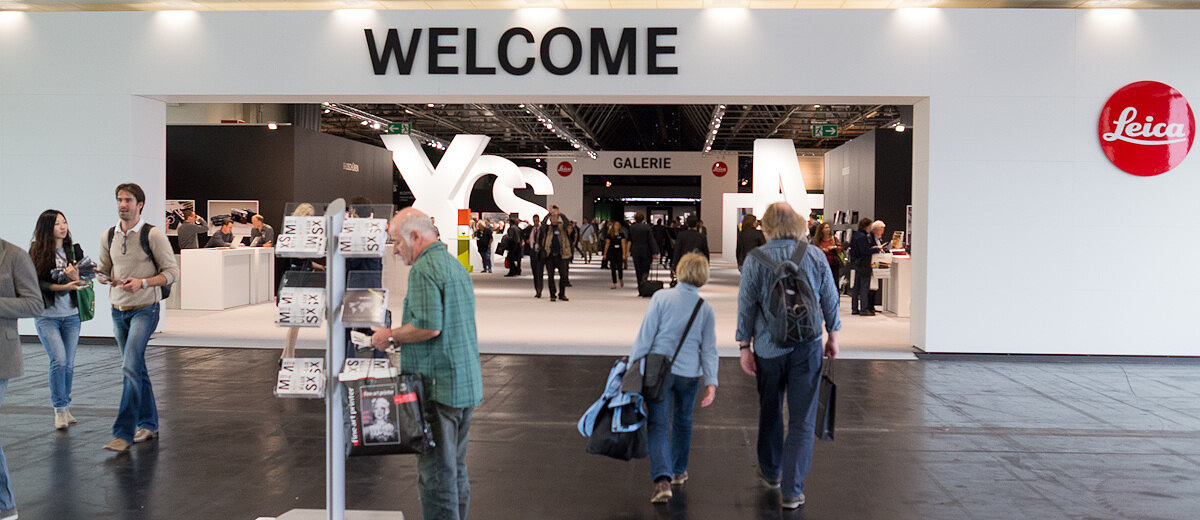
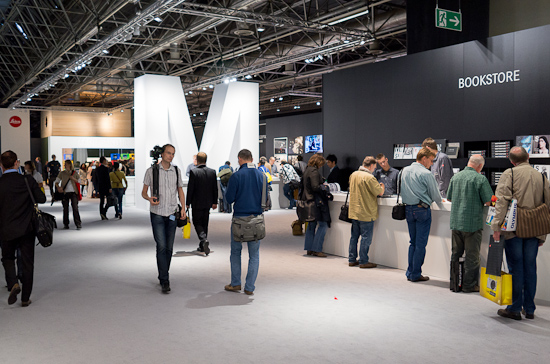
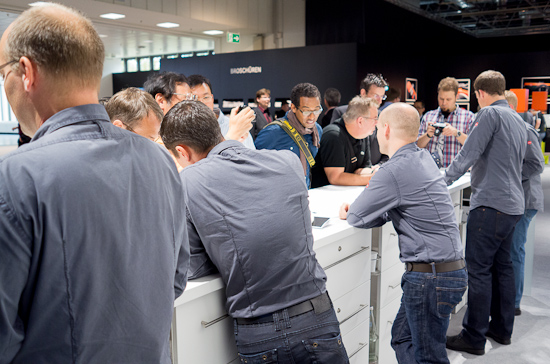
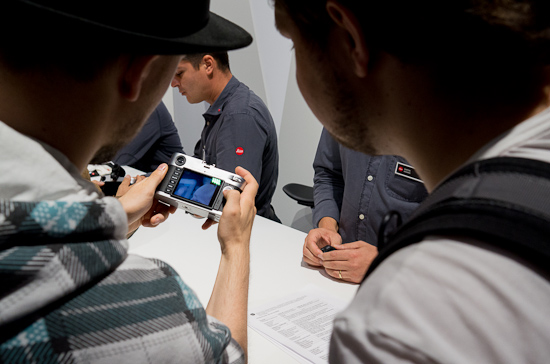
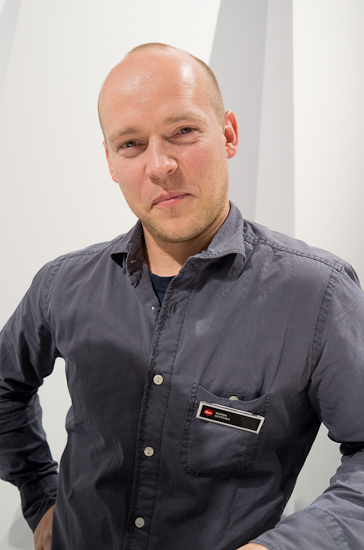
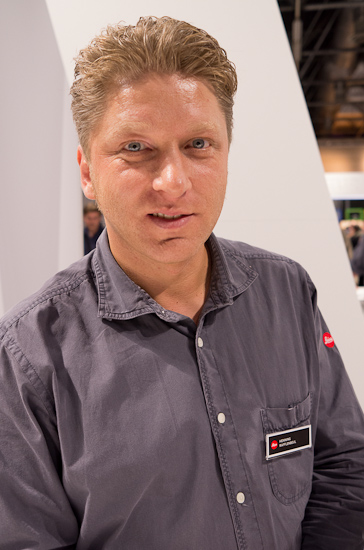
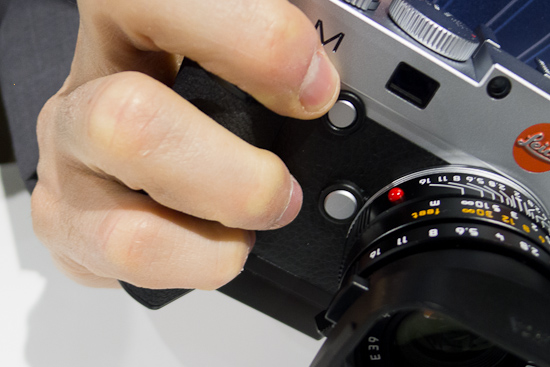
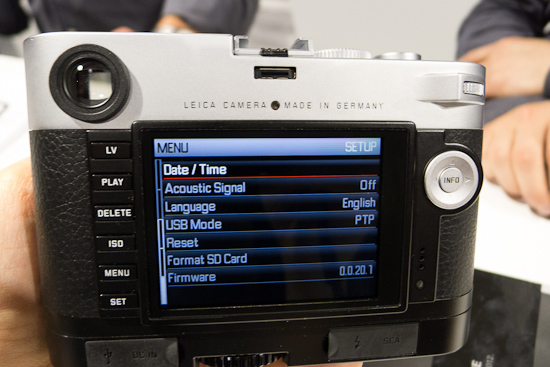
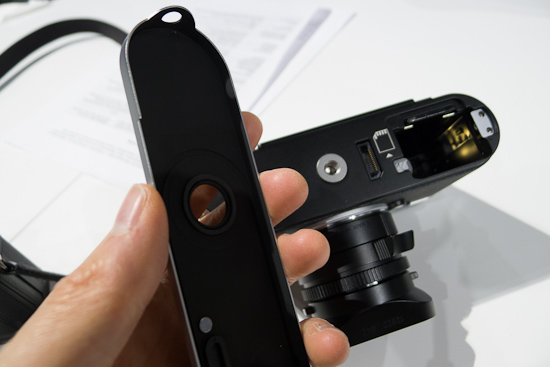
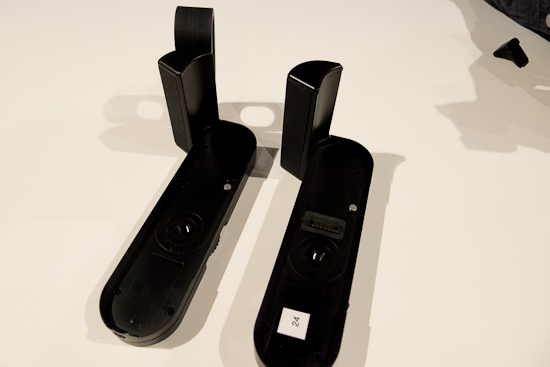
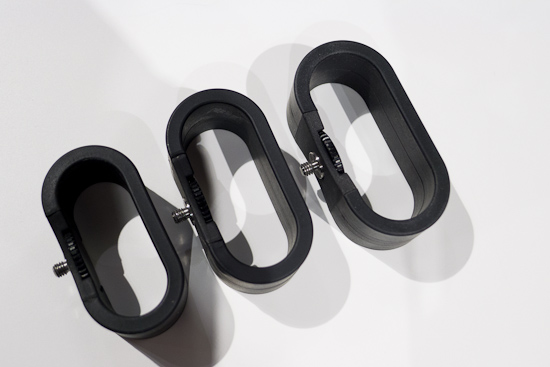
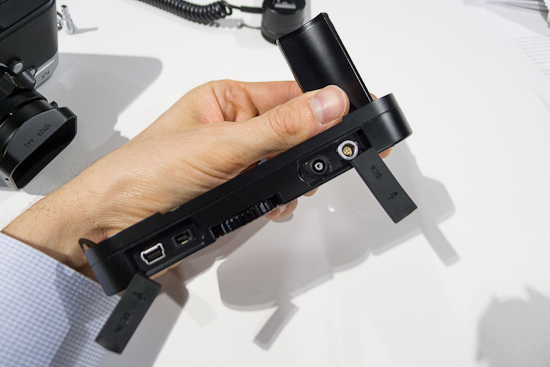
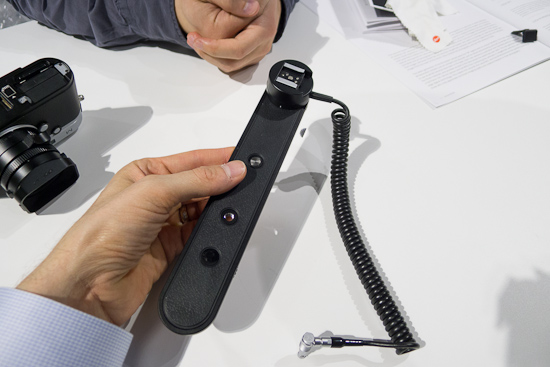
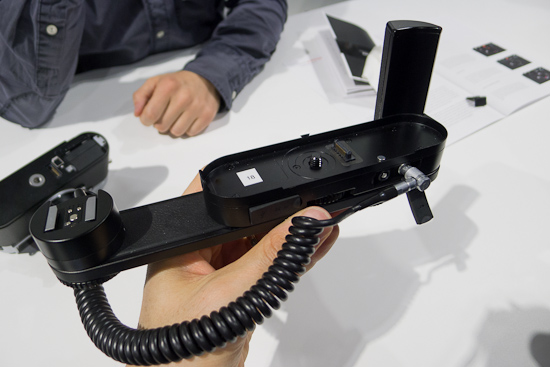
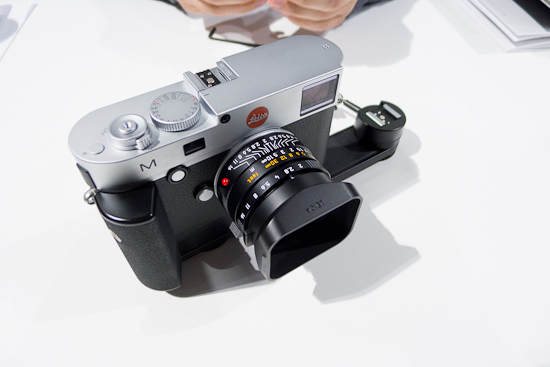
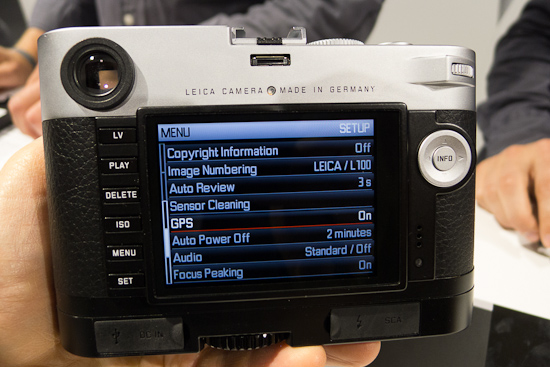
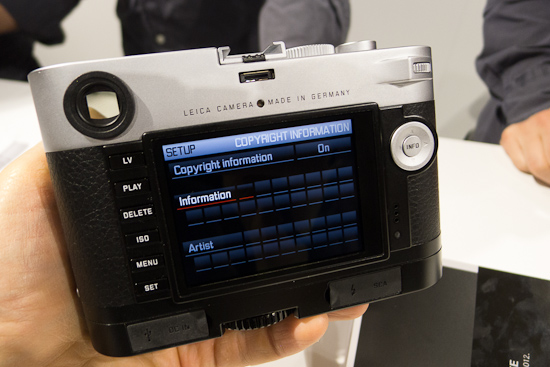
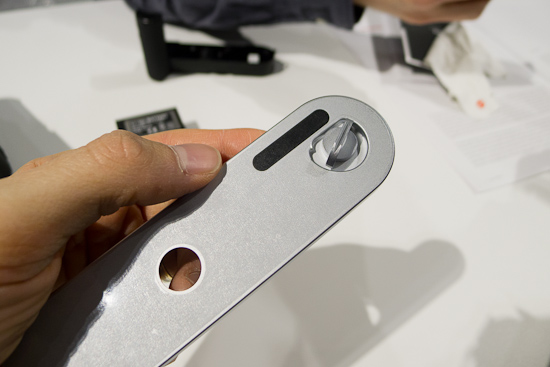
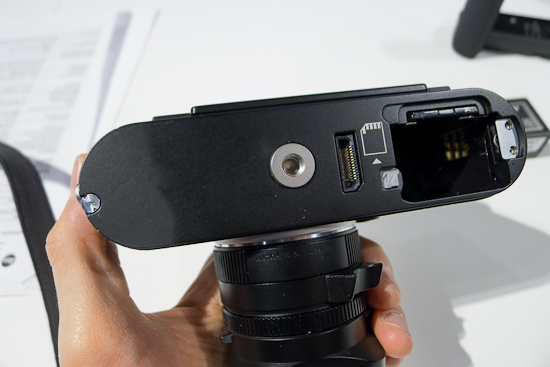
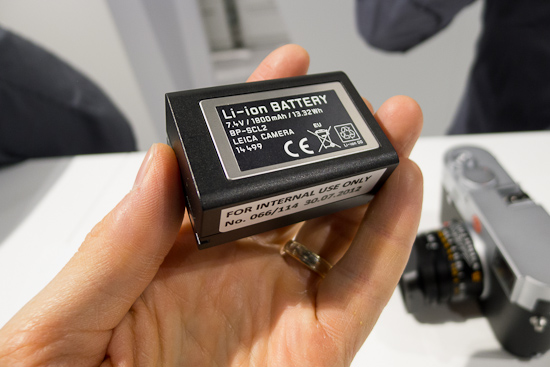
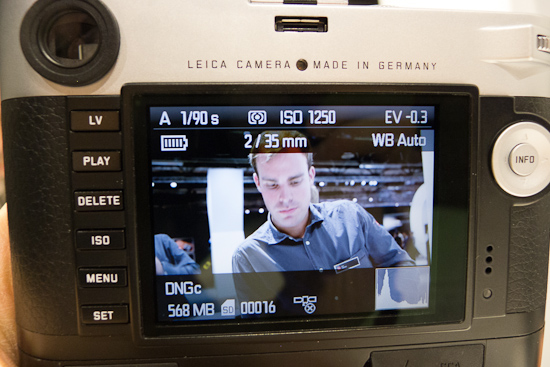
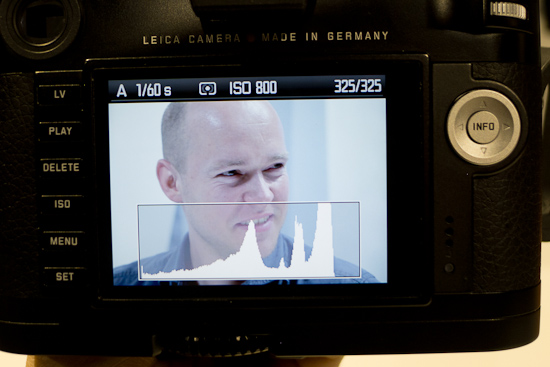
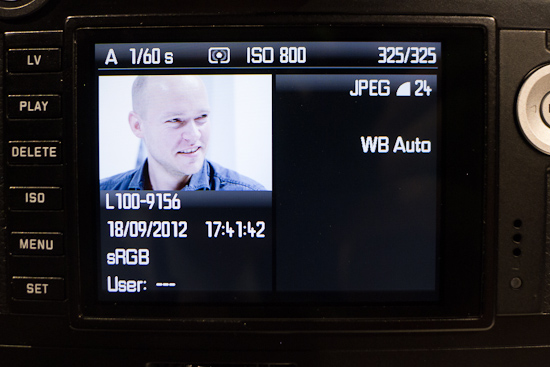
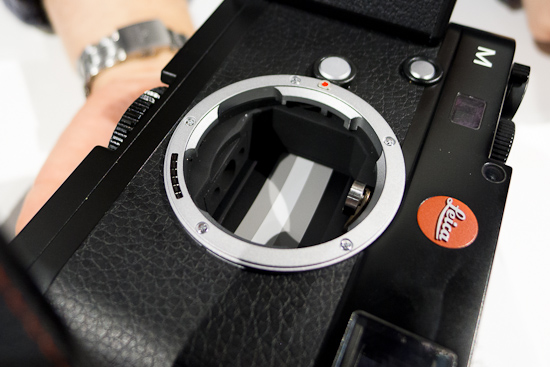
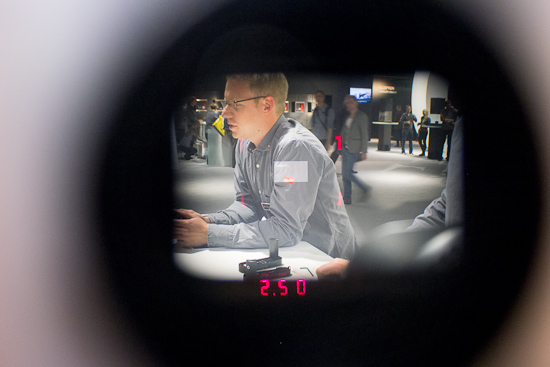
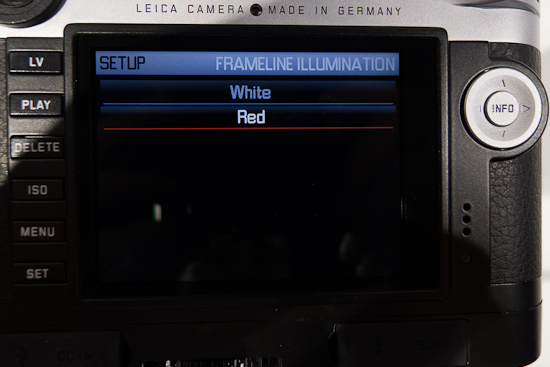
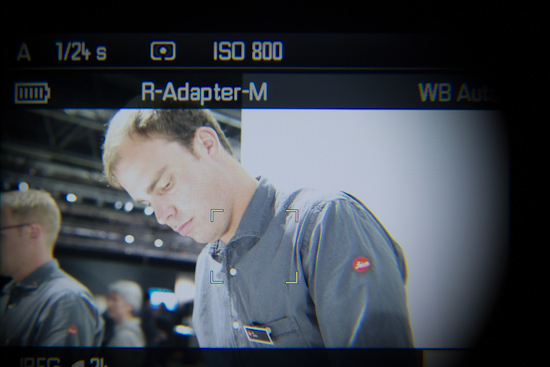
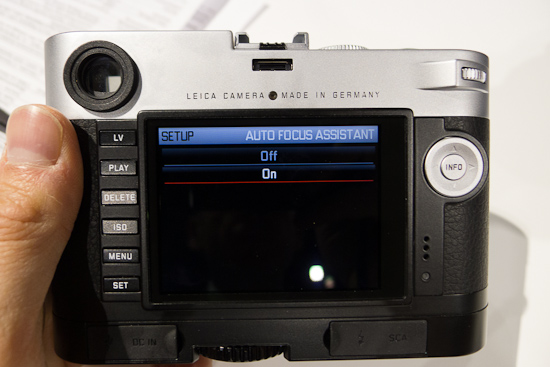
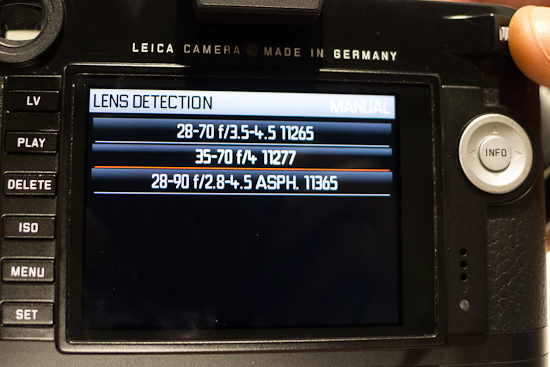
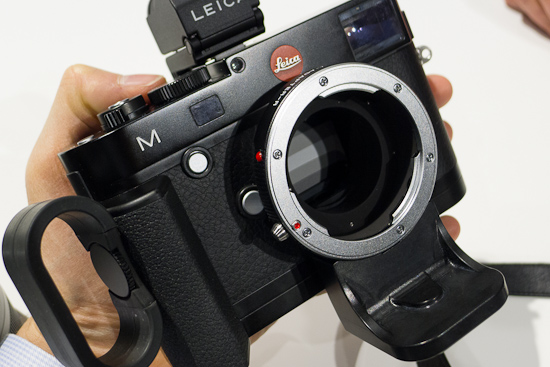
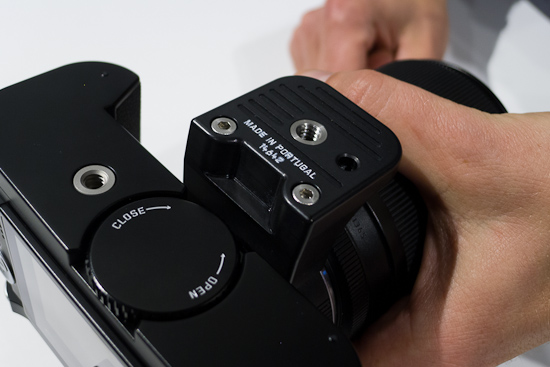
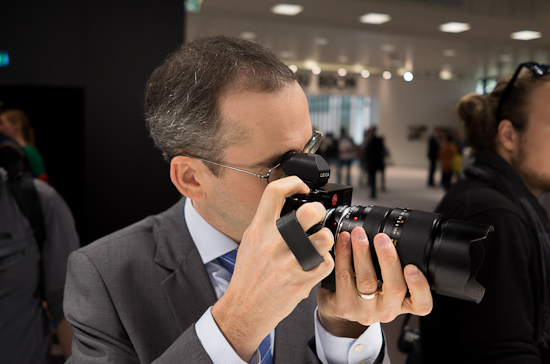
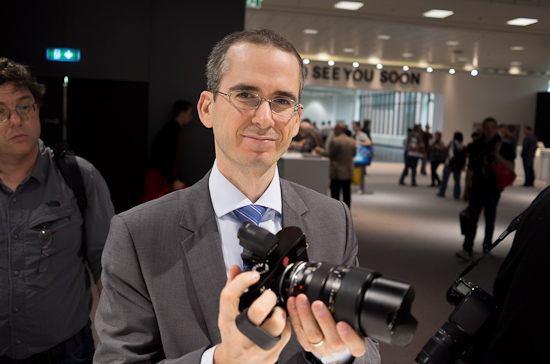
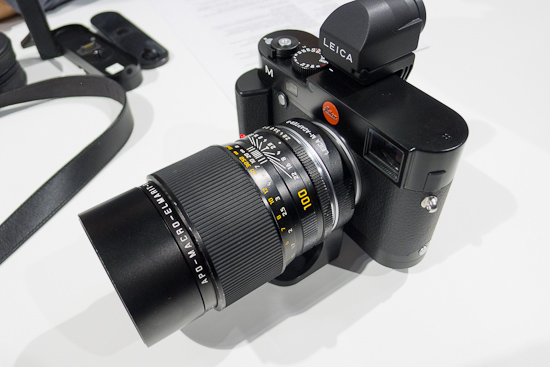
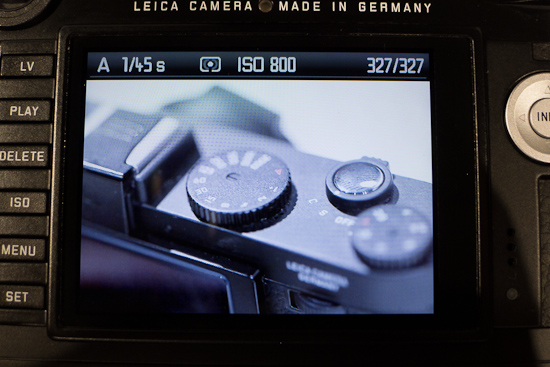
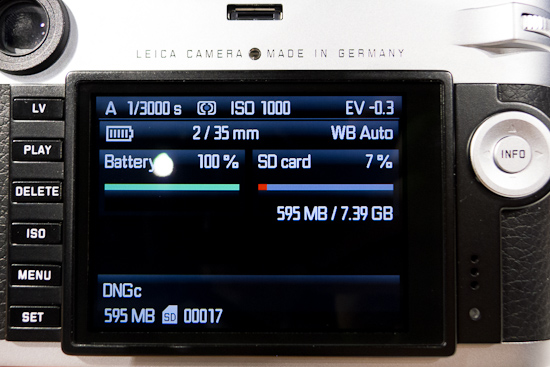
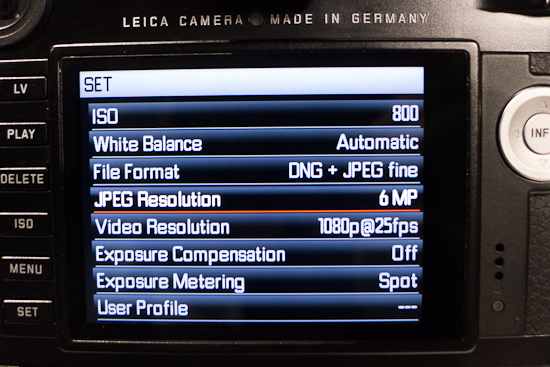
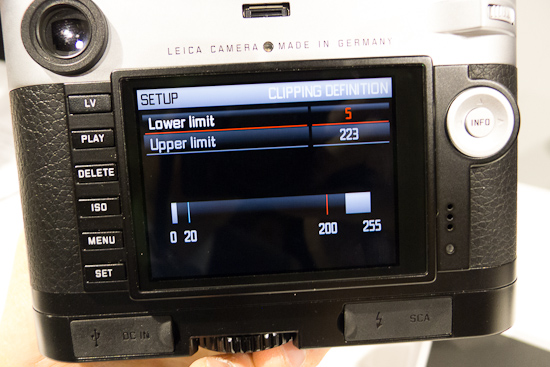
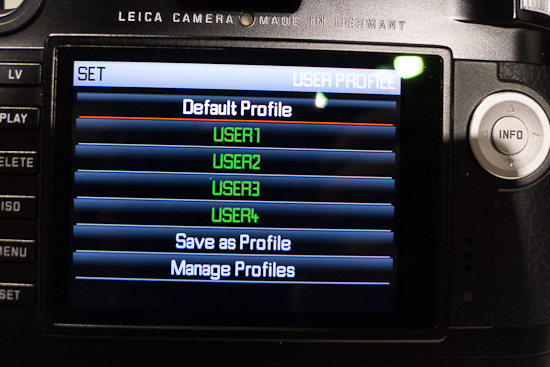
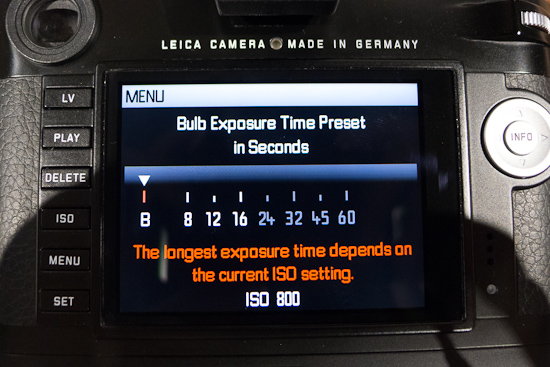
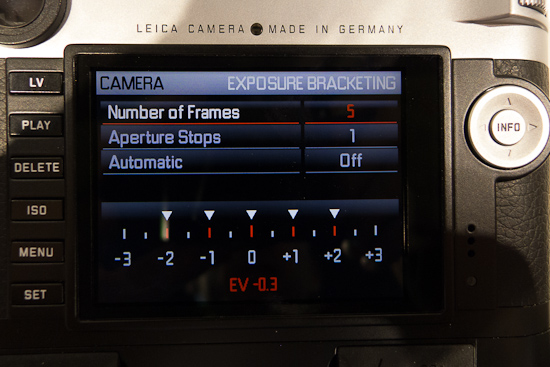
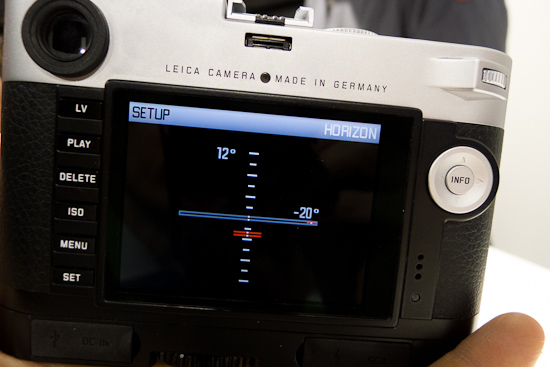
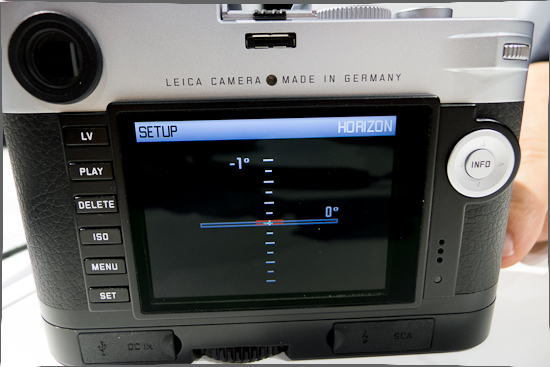
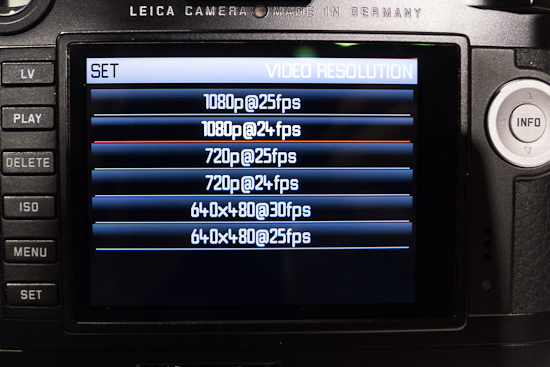
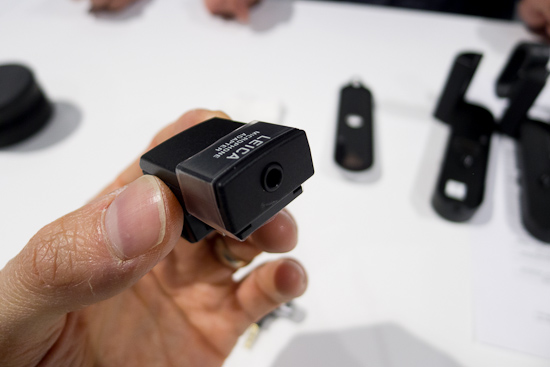
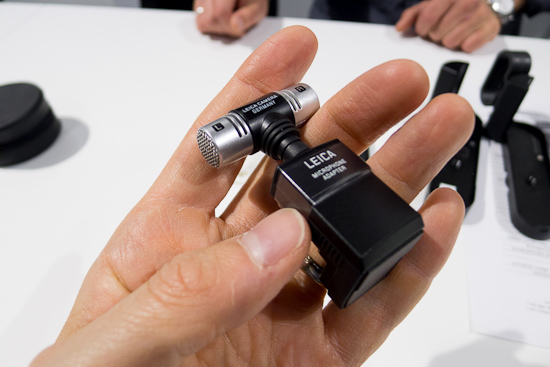
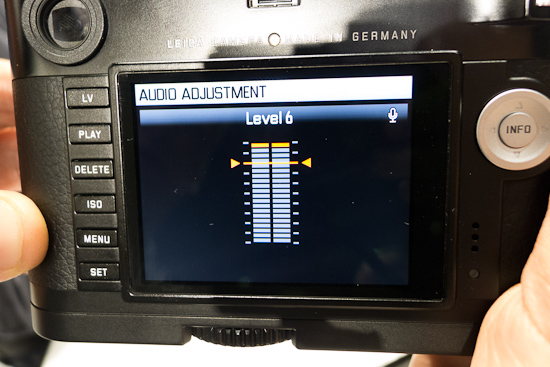
Thanks for the great report, David. This is the best supplementary M information I’ve seen so far.
How loud is the shutter and cocking sound in the M relative to the M9?
When you zoom %100 in on the screen to check focus, does it have the “chunky pixel” look of the M9, or is it a true %100 view?
Is the longest shutter speed really 60s, or can you hold the shutter open indefinitely on B?
Thanks!
LCD images don’t use full screen …… is this a pre-production set-up ??? There is a bit blanked off….
Looks as if it should use the new S 920k 3″ 3:2 LCD
Any explanations ???
Steve
Helpful report covering the aspects of the new M that the specs can t provide .
It will be a while until we get the real scoop …as for me its about the new sensor and how it affects the IQ . Its going to be a different look ..hope they didn t take my Kodachrome away
Does the EVF come with the new M or is it an accessory?
Bill Grimwood
Hi Bill,
It is an accessory that can be purchased separately. You can find the Leica M EVF on our website at this link: Leica M EVF.
Excellent report David. Best info on the web.
Your work is improving over the good work you did two and four years ago.
You look fresh and write well, even without sleep. Drink coffee after every beer, it always helps.
While you are there today, would you, could you buy the Leica shirt off the back of one of your friends for me? XL or XXL?
Excellent David
I wish I’d been there.
You’ve answered a lot of important questions.
It seems that the M we’ve all loved and used has suddenly turned into the all purpose camera.
My, am I glad I bought that 28-90 zoom last year!
all the very best
Jonathan Slack
Great report David. Thanks. If you’re floating past the booth again could you try to get some shots of what the focus peaking looks like on the rear screen (or EVF – possible?). Thanks. Rick Dykstra.
Great article David. You managed to cover a lot of details and it is much appreciated. I hadn’t considered the new M until reading your report.
I have already booked my trip to PhotoPlus. I can’t wait to see these new products in person.
Thank you for what is certainly the most thorough report I’ve found on the new M. What I’d like to know is: does the camera feel bigger/thicker in hand than the 9? This is something that I’ve read conflicting opinions about.
I dream of a digital M with the body thickness like the old cameras. To this day the M8 and M9 still feel chunky to me.
Excellent, hands-on report. I’m envious in a way, as I’ve been waiting for a digital R of some kind for a l o n g time (as have others) but this seems to do the trick rather nicely, and in fact, the design/function effort reminds me of ‘older Leica’ system days when everything had a synergistic quality.
I look forward to trying one out and seeing/feeling for myself. But it does indeed seem Leica has finally got ‘air in their tires’ and have some future design and product direction. Too, I would have to say that here will be some new M lenses that will be designed for use on the M with the EVF; perhaps smaller type wide zooms alonfg the lines of the Tri-Elmar, which would probably really be sweet…and, they could also possess the ability to focus closer.
The main use I had in the past for the M’s was for wide angle work but of course, the finders just weren’t precise enough for my framing needs, but with the EVF that chages everything. I can be a harsh task-master when it comes to Leica, but again, I’m happy for them and the new M.
Great report David! I too wish I could go to Photokina, but I will have to settle for PhotoPlus. Two questions:
Thanks for your report that conveys a sense of being there. Question: Are R-lenses to be used in stop down mode?
Can you comment on the APO 50mm lens? Did you use it on an M9?
thanks for the useful info–
like some others here, i really want to know about two things: the size (thickness) and the shutter sound, both compared to the m9 (or any old film m for that matter).
i guess leica is saying that the shutter release is also new? does it feel any better than the m9 (which has always been a weak spot on mine)?
one comment–the mic adapter would have been much more useful if they had put another coldshoe on top of the adapter–then i would have a place to put my rode mic after i plug it in…
thanks again, looking forward to more info.
thanks for this review, it’s as should be.
I spoke with David a bit today, and asked him about the size. I am sure he’ll chime in here, but from what he said, the new M is just about the same weight as the M9, and the body itself is also just about the same. To quote him “it feels like an M camera.” I don’t think the M’s size and weight will be anything to be concerned about.
Per the R lenses, they will need to be used in stop-down mode, as there is no electronic or mechanical connection between the adapter and the R lens. The camera’s live view will auto-gain to adjust brightness when the lens is stopped down, so you can still focus and compose.
What are those four dots on the left side of the top plate? (visible in the picture of the chrome model attached to the grip and flash bracket, and in the picture of the black model with the 100 APO macro attached.)
The four dots on the top plate are the mono microphone that is built into the camera for sound capture during video recording.
The shutter sound is shorter. I didn’t do a direct comparison and the show tends to be a little noisy. I did a video interview with Jesko von Oeynhausen, the M product manager and we do record the shutter sound. My wifi at the hotel is pretty slow, so I will upload the video when I’m back in the office on Tuesday.
At 100%, the image is pretty sharp. It is a true 100% view.
The longest speed is 60 seconds. You can’t use the self timer in B mode trick.
The circuit board that the LCD is mounted on extends further than the LCD active image area. Leica designers could have covered this area with black metal, or they could extend the glass to cover. By using glass, the M has a sleeker appearance. The entire 920k pixels are being used. Similar approaches are very common in touchscreen smartphones, for instance.
Excellent report, David, and I applaud Leica’s “R-solution”. Are the 20+ R-lenses supported in the menu of the Leica M limited to the latest ROM models? How are other R-lenses identified or added to the menu? Since it was specifically stated that “almost every Leica-r lens can also be used with the Leica M”, is there a list of R-lenses and lens accessories that will not work? For example, what about the PC-Super-Angulon-r 28mm f/2.8; Bellows BR2; Macro-Adapter-r; 2X and 1.4X Extender-r’s? Only a limited number of older R-lenses can be ROM modified; does it matter? The same question about 6 bit coding on M-lenses. Must older non-coded M-lenses be modified to communicate properly? Does TTL functionality remain with Leica M using Leica R lenses with the R adapter M, multi-functional handgrip, SCA adapter set and Leica SF-58? Must the lenses (R or M) be coded for automated functionality between the M and the SF-58 or other SCA adapted flash unit? Otherwise, will flash have to be metered manually similar to studio strobes?
This is going to be quite challenging, and I hope it will be worth the investment. When might the M-instruction manual be available for downloading?
Great report. A pleasure to read.
Why Leica used a d-pad for the M camera and a joystick for the S?
The joystick seems to be a much better solution (smaller).
Why there are no consistence among products?
Why Leica used a d-pad for the M camera and a joystick for the S?
The joystick seems to be a much better solution (smaller).
Why there is no more consistence among products?
Is the black paint finish of the new M more durable than that of the M9 or is it the same? (I prefer the black camera, but I fear paint deterioration; chrome is more durable).
Good questions. I am currently working on my follow-up article on the M to address questions that I’ve been getting, and which I asked Jesko, the M product manager.
David,
Really nice report! Great information and great pictures. Thanks for all of the time and effort that went into this. See you soon.
Jim Wagner, Leica Camera Inc.